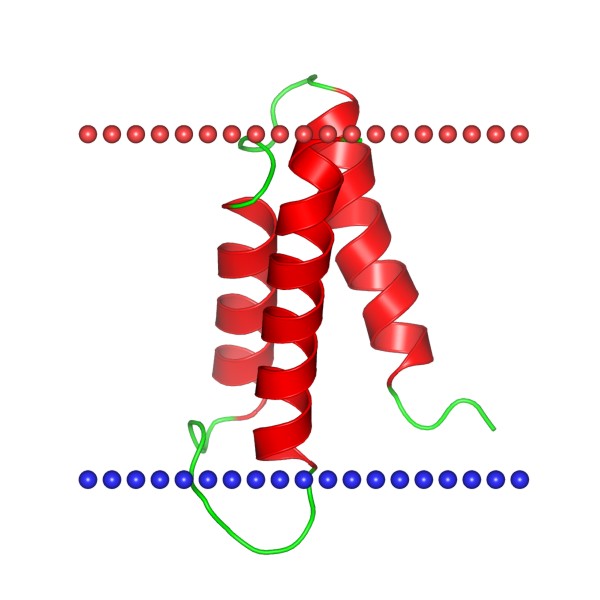Creative Biostructure has established a comprehensive membrane protein production platform through years of experience, with this platform our scientists can offer customized Mempro™ Transmembrane proteins 14 production services using detergent-free expression system.
Transmembrane proteins 14 is a superfamily which includes two members: transmembrane protein 14C (TMEM14C) and transmembrane proteins 14A (TMEM14A). Transmembrane proteins 14 is part of the alpha-helical polytopic class. They all lay in the interior of mitochondrial membrane and are encoded by the genes in human. There are 99 amino acids in TMEM14A and 112 amino acids in TMEM14C. It’s shown that TMEM14A can hold back apoptosis by means of stabilizing MMP, without using the production of reactive oxygen species (ROS) during the free of cytochrome c and the activation of caspase-3. Because of the role as a transmembrane channel, TMEM14C possibly can import protoporphyrinogen IX into the mitochondrial matrix helping heme synthesis and hemoglobin production.
 Figure 1. Structure of transmembrane proteins 14A. (Genome research 2000)
Figure 1. Structure of transmembrane proteins 14A. (Genome research 2000)
Creative Biostructure guarantees our customers unparalleled service in high quality Transmembrane proteins 14 production using detergent-free membrane protein expression system, we can achieve various strategies for Mempro™ detergent-free protein production, including:
- Mempro™ Transmembrane Proteins 14 Production Using Nanodiscs
Nanodiscs consist of membrane scaffold proteins (MSPs) which can provide two surface, one is a hydrophilic at the outside, while the other is facing the lipids. The length of the MSP is the crucial factor of the size when the target membrane protein synchronously assembles with phospholipids into a discoidal bilayer.
- Mempro™ Transmembrane Proteins 14 Production Using Amphipols
Amphipols (APols) meaning small amphipathic polymers which are enable to hold individual MPs water-soluble in their native state under the formation of little hydrophilic complexes. Amphipols may be typically used in biophysics and biochemistry by the physicochemical properties of amphipols cut, which is based on the wide resources of polymer chemistry.
- Mempro™ Transmembrane Proteins 14 Production Using Poly (styrene-co-maleic acid) Lipid Particles (SMALPs)
As a biochemical approach, SMALP has an outstanding potential for making membrane bilayers solubilized and implanting discs in detergents-free condition. Besides, electron microscopy has quickly progressed, which results in the highly development of data acquisition, together with the conformational and resolution information getable.
These novel detergent-free approaches for Transmembrane proteins 14 production can be gained easily, and enabling more deeply structural and functional studies.
Creative Biostructure provides other various Mempro™ membrane protein production services. Please feel free to contact us for a detailed quote.
References:
Jamshad, M., Lin, Y.-P., Knowles, T. J., Parslow, R. A., Harris, C., Wheatley, M., . . . Overduin, M. (2011). Surfactant-free purification of membrane proteins with intact native membrane environment. Biochemical Society Transactions, 39(3), 813-818.
Mungall, A., Palmer, S., Sims, S., Edwards, C., Ashurst, J., Wilming, L., . . . Scott, C. (2003). The DNA sequence and analysis of human chromosome 6. Nature, 425(6960), 805-811.
Zhang, Q.-H., Ye, M., Wu, X.-Y., Ren, S.-X., Zhao, M., Zhao, C.-J., . . . Lu, G. (2000). Cloning and functional analysis of cDNAs with open reading frames for 300 previously undefined genes expressed in CD34+ hematopoietic stem/progenitor cells. Genome research, 10(10), 1546-1560.
